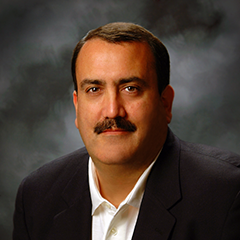
The first week of any school year is always so exciting! It is wonderful to see your new and returning students. While the new school year brings with it many organizational challenges, the most immediate task is to get students moving forward again after a long summer. Often younger students arrive at school concerned that they won’t remember how to play or read music, while older students come in a little rusty. This is the perfect time for a string player’s reboot.
Warm-Up Music
In order to alleviate student nervousness about playing, start with a tune or piece from the previous year that they know very well. If students are coming from different schools and do not have common repertoire, choose something that will be very easy for everyone.
I encourage all groups to have a rote warm-up tune as part of the curriculum. If you have done this, it can be played in unison from memory. Elementary students will always have a list of these; think book 1 or 2. Upper-level students will have tunes they remember from their earlier days.
SmartMusic includes great warm-up music and so much more. Try it for free.
The Reboot
Use these tunes to review and reboot their ears and technique. Because the music is not challenging, students have the brain space to focus on the review issues. What’s more, as students play the familiar tunes/pieces, you have time to do evaluation and remediation.
It is critical for you to assess where the students are so you know how to move forward.
Ten Review Priorities
You may wish to add additional priorities but this list is a good start:
- Make sure all instruments are well set-up and in working order. This will include bridge placements, string height, bow hair, strings, pegs, and end pin function.
- Be sure sitting/standing position and overall posture are correct. Remember that the body should be lengthened and balanced. It is easier to start correctly than to remediate a bad habit. Since students grow over the summer, double-check instrument sizes, end pin lengths, and chair or stool heights.
- Be sure right-hand positions include proper finger placement, bent thumbs, and flexible fingers, wrists, and elbows. Review in all parts of the bow.
- Be sure left-hand positions include well-formatted fingers, thumb placement, and correct wrist angle. Check the positions on all strings to make sure students are adjusting to lower or higher strings appropriately.
- Play the rote tune in different bowing lanes, with differing weights (dynamics), and bow speeds to review all the elements of tone. Play the tune at different tempos and dynamics.
- Play the tune in different parts of the bow including the lower third, middle third, upper third, lower half, upper half, and whole bows where appropriate. Playing the tune at different tempos is an easy way to use more or less bow.
- Play the tune with a variety of articulations to review bow strokes appropriate for the level.
- Play the rote tune starting on different notes to engage the ears and change finger patterns. Change the tempo to increase left-hand finger speed. Review upper positions with older students by playing the tune up a string or in a higher position.
- Review music reading by using a tune or series of tunes students know well from the year before. Add in easy flashcards or sight-reading material to re-engage their eyes.
- Make sure students look and sound good and play with confidence before proceeding with the new curriculum.
This time of rebooting will save countless remediation hours later in the year. Remember to have fun and have a great time with your students.
